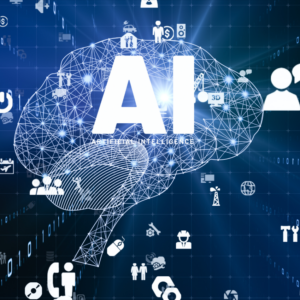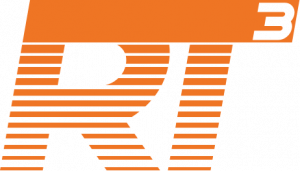AI is being leveraged every day in the roofing industry. Understanding what it is and how to use it to enhance efficiencies is a must for roofing contractors. AI can help improve efficiencies, streamline processes and help you quickly gain insights into data about processes, project, profitability and more.
The RT3 Technology Task Team put together the following guide to help contractors navigate this rapidly changing and growing technology landscape.

What is AI?
IBM defines AI as, “Artificial intelligence, or AI, is technology that enables computers and machines to simulate human intelligence and problem-solving capabilities.”
Per The National Artificial Intelligence Initiative Act of 2020: “A machine-based system that can, for a given set of human-defined objectives, make predictions, recommendations or decisions influencing real or virtual environments.”
What can AI do for you?
AI is a tool that can be used to assist us with doing our jobs better, in a more efficient and safe manner. It’s important to understand that AI is not going to displace the need for a human, it simply functions as a co-pilot to assist the human in working smarter. There are some presenters that even argue against the co-pilot phase, but the underlying message is important. AI is great at automating redundant tasks, but don’t replace your intelligence with its intelligence.
How does AI work, how does it learn?
ChatGPT – AI learns by studying examples and feedback. It can learn from labeled examples, find patterns in unlabeled data, learn from trial and error, or predict parts of the data from other parts. These learning methods are done using algorithms and neural networks.
How can AI be used in safety?
Real-Time Hazard Detection
–Drones with AI-Powered Analysis: Drones can be used to survey job sites, capturing footage that is processed by AI-powered software. This technology analyzes the footage to identify potential hazards, such as unstable roof areas, misplaced tools, or debris. It can assess compliance with safety regulations or flag noncompliance for further review.
–Wearable Devices with AI Analysis: Wearable devices can track workers’ movements and collect data, which is then processed by AI-powered software in real-time. This analysis can help detect fatigue or unsafe behaviors, such as working near edges without fall protection, allowing for proactive safety measures.
–AI-Assisted Camera Surveillance: Cameras can capture footage of job sites, which AI-powered software analyzes to identify potential safety violations, such as missing personal protective equipment (PPE), helping to enhance compliance and workplace safety.
Predictive Analytics for Risk Assessment
–Incident Prediction: AI analyzes past incidents and job site conditions to predict high-risk scenarios, allowing contractors to take proactive measures.
–Weather Monitoring: AI systems can integrate real-time weather data to anticipate risks like high winds or lightning during roofing operations.
Safety Training and Education
–Simulated Training: AI-powered VR and AR systems provide immersive training environments where workers can practice safety protocols without real-world risks.
–Personalized Training Programs: AI evaluates individual workers’ skills and learning gaps to provide tailored safety training content.
Compliance and Reporting
–Automated Inspections: AI tools can review compliance checklists and ensure safety protocols are followed on-site.
–Simplified Reporting: AI streamlines incident reporting by collecting data, auto-generating reports, and identifying patterns in safety violations.
Behavioral Monitoring
–Fatigue and Stress Monitoring: AI integrates with biometrics to detect when workers are stressed or fatigued, reducing the likelihood of accidents.
–Behavior Analysis: AI systems monitor and flag unsafe practices, such as improper ladder use or rushing during tasks.
Emergency Response
–Accident Detection: AI sensors detect falls or other incidents and immediately alert supervisors or emergency services.
–AI-Driven Evacuation Plans: In case of emergencies, AI can analyze site layouts to guide workers to the safest exit routes.
Cost Efficiency in Safety Management
–Resource Allocation: AI helps prioritize safety investments by identifying the most critical areas needing attention.
–Safety Audits: Automated audits by AI reduce the time and cost associated with manual safety reviews
How can AI be used in HR?
Streamlined Recruitment
–Resume Screening: AI tools can quickly review resumes and match candidates with job requirements, saving time and ensuring a better fit.
–Predictive Hiring: AI analyzes past hiring successes to predict which candidates will most likely excel based on their skills, experience, and personality traits.
–Automated Interview Scheduling: AI chatbots or scheduling tools can coordinate interviews with candidates, reducing administrative workload.
Improved Workforce Management
–Optimized Scheduling: AI-powered tools create efficient work schedules, ensuring adequate staffing and minimizing overtime costs.
–Labor Forecasting: AI predicts labor needs based on project timelines, seasonality, and historical data, helping roofing contractors allocate resources effectively.
–Attendance Monitoring: AI-integrated systems track attendance patterns and flag issues like tardiness or absenteeism.
Enhanced Employee Engagement and Retention
–Personalized Training Programs: AI identifies skill gaps and recommends training tailored to individual employees, fostering career growth.
–Sentiment Analysis: AI analyzes employee feedback from surveys or communication channels to gauge morale and identify potential retention risks.
–Recognition Programs: AI tracks performance metrics and helps managers recognize high-performing employees, boosting morale and retention.
Efficient Onboarding
–Digital Assistants: AI-driven chatbots provide new hires with instant answers to FAQs about benefits, payroll, and company policies.
–Paperwork Automation: AI tools auto-fill forms and manage document workflows, reducing errors and saving time during onboarding.
Data-Driven Decision Making
–Performance Analytics: AI provides insights into employee productivity and highlights areas for improvement.
–Retention Predictions: AI identifies employees at risk of leaving by analyzing work patterns and engagement levels, allowing proactive intervention.
Cost Optimization
–Payroll Management: AI-powered platforms handle payroll processing, tax calculations, and benefits management precisely and quickly.
–Benefits Customization: AI analyzes workforce demographics and preferences to recommend benefits packages that appeal to employees and optimize costs.
Enhanced Communication
–AI Chatbots: Provide instant answers to employee inquiries, improving communication efficiency.
–Real-Time Feedback: AI tools enable continuous feedback loops between employees and management, fostering a culture of openness and improvement.
How can AI be used in marketing?
AI in marketing is one of the most commonly used path of AI. Tracking users actions, webpages and other areas of interests, such as what you click on, allows AI to learn what you enjoy and retarget your ads and experience. Ever wonder why you search something on google and then have an email or social experience selling you that exact thing. AI and retargeting at its best.
How can AI be used in Sales?
AI will be come more involved as sales processes and best practices are typically documented in the form of playbooks. These playsbooks can be uploaded for Ai to learn and begin assuming the role a a digital coach. These same AI technologies have the ability to read emails, respond, create text messages and chat in real-time. These are only a few of the many functions and and human interactions that AI will continue to develop and be implemented into our sales processes, client experience and best practices. Resource: How AI will change sales.
Where can I access and start using AI?
AI is becoming a key part of many tools we already use daily, whether marketed as AI-driven or appearing to produce results that seem human-generated. This seamless integration makes AI both fascinating and practical for technology users, including roofing professionals.
Entry-Level AI Tools for Contractors
One of the easiest ways to start using AI is through platforms like ChatGPT and Google AI. There are others depending on the specialized usage you desire. These tools allow you to ask questions, perform tasks, and even provide step-by-step instructions—similar to how you might interact with a colleague or search for answers on Google, but more interactive and tailored.
Examples of How Roofing Contractors Can Use AI Tools:
- Drafting Emails or Customer Proposals – Save time by generating professional drafts for customer follow-ups, proposals, or appointment confirmations.
- Simplifying Technical Information – Use AI to break down complex roofing technicalities into simple explanations for clients or new employees.
- Creating Social Media Content – Generate posts to highlight completed projects, promote services, or share industry tips.
- Developing Training Materials – Quickly outline training sessions for new crew members, from safety guidelines to proper equipment usage.
- Lead Generation – AI can streamline your efforts to identify and connect with potential customers.
- Risk Management – AI can help roofing contractors identify, mitigate, and manage risks effectively.
How to Get Started:
Visit platforms like OpenAI’s ChatGPT or explore AI-enabled features in tools you already use, such as estimating software or project management systems.
Experiment with tasks like generating reports, brainstorming marketing ideas, or creating checklists for project planning.
Remember: While AI can save time and enhance productivity, it’s crucial to avoid inputting confidential or sensitive information. Keep your data secure while leveraging the benefits of this powerful technology.
Where can I learn more about AI?
You can access free courses from the University of Pennsylvania, Google, University of California: Davis, Harvard University and IBM. See free classes here.
Public vs. closed AI
Public is on the web typically and open to anyone to use. Closed would be a software (i.e. lead generation software) with built-in AI. As you consider use of AI, be considerate of the type you are using. For public systems, limit the confidential and proprietary information provided to the model. When working with a closed model, be sure to work with the developer to understand security implicatons.
What should I not use public AI for?
Roofing contractors should exercise caution when using public AI tools. These models can retain and potentially share information provided in prompts, which poses a risk to sensitive business data. Here’s what to avoid inputting:
Confidential Financial Data
Do not upload quarterly financial statements, budget details, or any internal financial reports for summarization or analysis.
Bids and Estimates
Avoid inputting specific project bids, cost estimates, or pricing breakdowns. This data is highly sensitive and could be exposed in future outputs.
Trade Secrets and Proprietary Processes
Keep unique methodologies, specialized techniques, or proprietary processes out of public AI tools. Sharing these could compromise your competitive edge.
Client Information
Never input customer names, addresses, project details, or any personal information that could breach privacy or damage client trust.
Sensitive Business Strategies
Refrain from sharing operational plans, long-term strategies, or internal discussions about growth or restructuring.
Key Takeaway: Public AI tools are not secure environments. Use them for general tasks like drafting blog posts, creating non-sensitive marketing copy, or brainstorming ideas—but never for anything that could expose confidential or competitive business information.
Building a relationship with AI
The right prompts will deliver what you are looking for. Make it more custom for your business and needs. Many models, including ChatGPT will begin to learn traits about you, including writing style, voice, subject matter expertise, etc. As a result, the more conversation you have with the model will result in the model providing results that match you, resulting in more effective results. There are numerous prompt cheat sheets available online that can help you structure your interactions to get the results you want. This is a nice intro article that can help you understand prompts.
